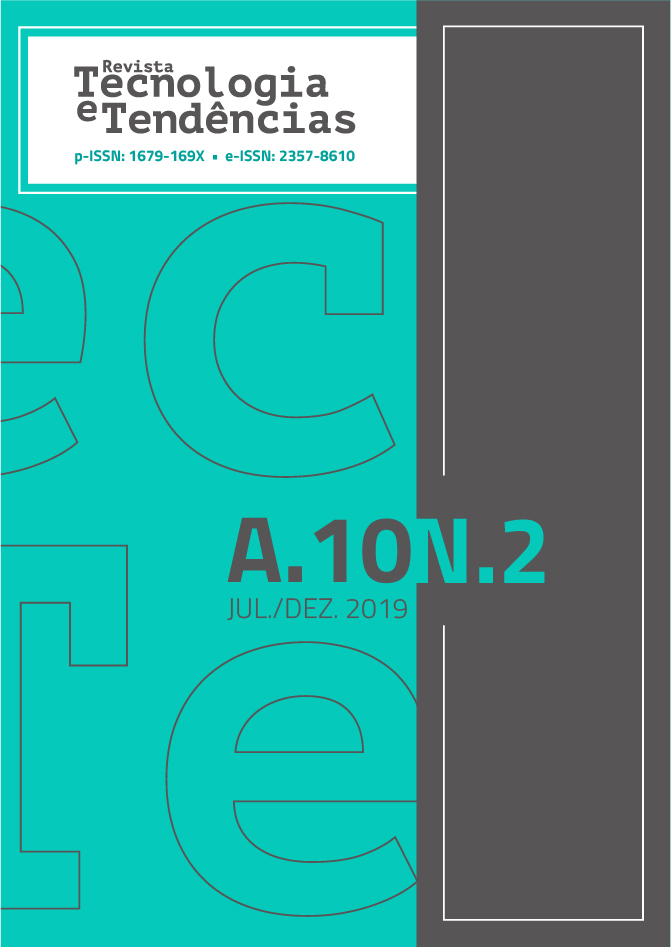TRATAMENTO DE EFLUENTE DE PROCESSOS DE RADIOGRAFIA: SOLUÇÃO PARA DESCARTE DOS RESÍDUOS
DOI:
https://doi.org/10.25112/rtt.v10i2.1966Abstract
O processo da revelação das imagens de radiografias simples utilizadas como diagnóstico por imagem na área da saúde consiste em quatro etapas: revelação, fixação, enxágue e secagem. Esses processos geram resíduos que quando descartados de forma inadequada, poluem o meio ambiente, devido a altas concentrações de elementos compostos por sulfetos e derivados da prata. De acordo com a Resolução nº 358/05 do Conselho Nacional do Meio Ambiente (CONAMA), os efluentes gerados pelo processamento das radiografias se encaixam no grupo B (resíduos químicos), pois contém substâncias tóxicas que causam risco ao meio ambiente e para a saúde da população. Um dos possíveis métodos para o tratamento desse efluente é a eletrocoagulação. É um método relativamente barato, onde a partir de uma eletrólise, pode-se ocorrer a desestabilização e agregação de partículas, onde há a formação de precipitado. A metodologia consiste em tratar o efluente gerado no processo de diagnóstico por radiografia simples pelo método da eletrocoagulação, e assim poder comparar os resultados de turbidez, dureza do líquido, análise da demanda química de oxigênio (DQO) das amostras tratadas e assim, atender todas as legislações ambientais de descarte. Os resultados consistem na queda de turbidez, queda de dureza, diminuição da DQO e nos sólidos totais, comprovando a eficiência do método de eletrocoagulação.
Palavras-chave: DQO. Efluente. Prata. Radiografia. Tratamento.
ABSTRACT
The process of revealing simple X-ray images used as diagnostic imaging in the health area consists of four stages: development, fixation, rinsing and drying. These processes generate waste that, when discarded improperly, pollute the environment due to high concentrations of elements composed of sulphides and silver derivatives. According to Resolution No. 358/05 of the Conselho Nacional do Meio Ambiente (CONAMA), the effluents generated by the processing of radiographs are classified as group B (chemical residues) because it contains toxic substances that cause a risk to the environment and to health of the population. One of the possible methods for treating this effluent is electrocoagulation. It is a relatively inexpensive method where, from an electrolysis, destabilization and aggregation of particles can occur, where there is precipitate formation. The methodology is to treat the effluent generated in the diagnostic process by simple radiography by the electrocoagulation method, and thus to compare the results of turbidity, liquid hardness, chemical oxygen demand (COD) analysis of the treated samples and thus, disposal legislation. The results consist of turbidity drop, hardness drop, COD reduction and total solids, proving the efficiency of the electrocoagulation method.
Keywords: COD. Effluent. Silver. X-Ray. Treatment.
Downloads
Additional Files
Published
Issue
Section
License
• Os autores mantêm os direitos autorais e concedem à revista o direito de primeira publicação com o trabalho licenciado sob a Licença Creative Commons - Attribution 4.0 International (CC BY 4.0).
• Os autores são estimulados a publicar e distribuir seu trabalho online (ex.: em repositórios institucionais ou na sua página pessoal), pois isso pode aumentar o impacto e a citação do trabalho publicado.
--------------------------------------------------------------------------------------------------------------------------------
• The authors retain the copyright and grant the magazine the right of first publication with the work licensed under the Licença Creative Commons - Attribution 4.0 International (CC BY 4.0).
• Authors are encouraged to publish and distribute their work online (eg in institutional repositories or on their personal page), as this may increase the impact and citation of the published work.

